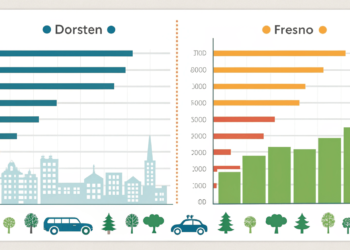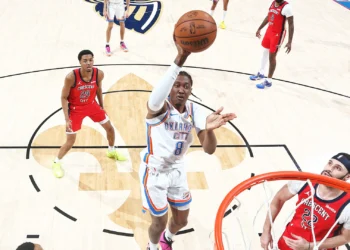In the world of horses and equestrian sports, understanding the various gaits is fundamental for riders, trainers, and enthusiasts alike. Among these, the quick gallop stands out as the fastest and most dynamic gait a horse can perform. Known for its power, speed, and fluidity, the quick gallop is not only a spectacle of equine athleticism but also a critical component in disciplines ranging from horse racing to endurance riding.
This article delves deeply into the anatomy, mechanics, training, and benefits of the quick gallop, offering a well-rounded understanding of this exhilarating gait.
Understanding the Quick Gallop
The quick gallop is defined as a four-beat gait that represents the peak of a horse’s natural speed. Unlike slower gaits such as the walk, trot, or canter, the gallop allows the horse to achieve maximum velocity by engaging large muscle groups and maximizing stride length. It’s this gait that enables horses to race across open fields or tracks with incredible swiftness, often reaching speeds of up to 30-40 miles per hour in short bursts.
The Biomechanics Behind the Gallop
At the core of the quick gallop’s efficiency is its unique biomechanics. The gait is characterized by:
- Four-Beat Rhythm: Unlike the three-beat canter, the gallop’s footfall sequence follows a strict four-beat pattern. This sequence provides a rhythm that optimizes balance and momentum.
- Suspension Phase: During the gallop, there is a distinct phase where all four hooves are off the ground. This moment of suspension contributes to the smoothness and speed of the movement.
- Stride Extension: The horse’s legs stretch fully, allowing it to cover more ground with each step. This extension requires powerful hindquarters and a flexible spine.
- Muscle Engagement: The gallop heavily engages muscles in the horse’s hindquarters, back, and shoulders, demanding both strength and endurance.
The Quick Gallop vs. Other Gaits

It’s important to differentiate the quick gallop from other horse gaits:
| Gait | Beats | Speed Range | Characteristics |
| Walk | 4 | 3-4 mph | Slow, relaxed, even-paced |
| Trot | 2 | 6-8 mph | Bouncy, diagonal pairs of legs |
| Canter | 3 | 10-17 mph | Smooth, three-beat rhythm |
| Gallop | 4 | 25-40+ mph | Fastest, four-beat, aerial phase |
The quick gallop is the most suitable gait for high-speed performance but requires skillful handling to ensure safety and control.
Training and Conditioning for the Quick Gallop
Achieving a proficient and controlled quick gallop requires dedicated training for both horse and rider. It’s not simply about pushing the horse to run fast; it involves conditioning the horse’s body and mind to sustain high speeds while maintaining balance and responsiveness.
Step 1: Building a Foundation
Before attempting to gallop, horses must be comfortable at the walk, trot, and canter. These foundational gaits build the muscle tone and cardiovascular fitness needed for faster movement.
Step 2: Cardiovascular Conditioning
Galloping is highly demanding on a horse’s heart and lungs. Interval training, where short bursts of galloping alternate with periods of walking or trotting, can help build stamina and prevent fatigue.
Step 3: Strength Training
Strength exercises targeting the hindquarters and core improve propulsion and balance. Hill work, pole exercises, and controlled transitions between gaits can aid in developing the necessary muscle groups.
Step 4: Controlled Galloping Sessions
Start with short gallop bursts on soft, level terrain to build the horse’s confidence and responsiveness. Gradually increase the length and intensity of gallops as fitness improves.
Step 5: Rider Skills and Safety
Riders must learn how to maintain a balanced seat, use appropriate aids, and stay relaxed to effectively support the horse at a quick gallop. Wearing safety gear such as helmets and body protectors is essential.
The Importance of Terrain and Environment
Galloping places high impact on a horse’s joints and hooves, so choosing the right environment is critical:
- Soft but Firm Ground: Avoid rocky or overly hard surfaces that can cause injury.
- Clear Path: Ensure there are no obstacles or hazards that could spook the horse or cause accidents.
- Appropriate Weather: Avoid extreme heat or slippery conditions to reduce stress and risk.
Benefits of Mastering the Quick Gallop

Mastering the quick gallop brings a multitude of benefits:
- Competitive Edge: Essential for racing and timed events.
- Improved Health: Increases cardiovascular and muscular fitness.
- Stronger Horse-Rider Connection: Enhances communication and trust.
- Enhanced Agility: Develops quick reflexes and balance.
- Confidence Building: Both horse and rider grow in self-assurance.
Quick Gallop in Various Disciplines
- Horse Racing: The gallop is the cornerstone of all racing events.
- Eventing and Cross-Country: Riders rely on quick gallops to cover large courses efficiently.
- Endurance Riding: Properly paced gallops allow horses to conserve energy while maintaining speed.
- Recreational Riding: For trail riders, galloping can add excitement and challenge.
Common Challenges and Solutions
- Fatigue: Avoid overworking the horse; rest and recovery are vital.
- Loss of Control: Use consistent training and stay calm.
- Injury Risks: Regular vet checkups and proper hoof care reduce injuries.
- Rider Balance Issues: Practice core strengthening and proper riding posture.
FAQ’s
1. What is the difference between a gallop and a canter?
The gallop is the fastest horse gait with a four-beat rhythm and an aerial phase where all four hooves are off the ground. The canter is slower, has a three-beat rhythm, and is more controlled, making it easier for beginners.
2. How can I safely train my horse to perform a quick gallop?
Start with building fitness through walking, trotting, and cantering. Use interval training with short gallop bursts on soft, flat terrain, gradually increasing speed and distance while always prioritizing control and the horse’s wellbeing.
3. What muscles does the horse use most during a gallop?
The horse’s hindquarters, back, and shoulder muscles are heavily engaged during the gallop, providing power, propulsion, and balance to maintain speed and smoothness.
4. How fast can a horse gallop compared to other gaits?
A gallop can reach speeds between 25 to 40+ miles per hour, making it the fastest gait compared to the walk (3-4 mph), trot (6-8 mph), and canter (10-17 mph).
5. Why is terrain important when galloping a horse?
Galloping puts high stress on a horse’s legs and joints, so choosing soft, level, and obstacle-free terrain helps reduce injury risks and ensures safer, more comfortable galloping sessions.
6. What are the key signs that a horse is ready to gallop faster?
A horse ready for a quick gallop shows good cardiovascular fitness, muscular strength, responsiveness to rider aids, confidence, and no signs of fatigue or discomfort during training sessions.
Conclusion
The quick gallop embodies the spirit, strength, and speed of the horse. It’s a breathtaking display of athleticism that demands respect, preparation, and skill from both horse and rider. Whether you are training for competition or simply enjoying the thrill of fast riding, understanding the mechanics and care involved in galloping will ensure a safe, enjoyable experience that highlights the remarkable capabilities of these majestic animals.











